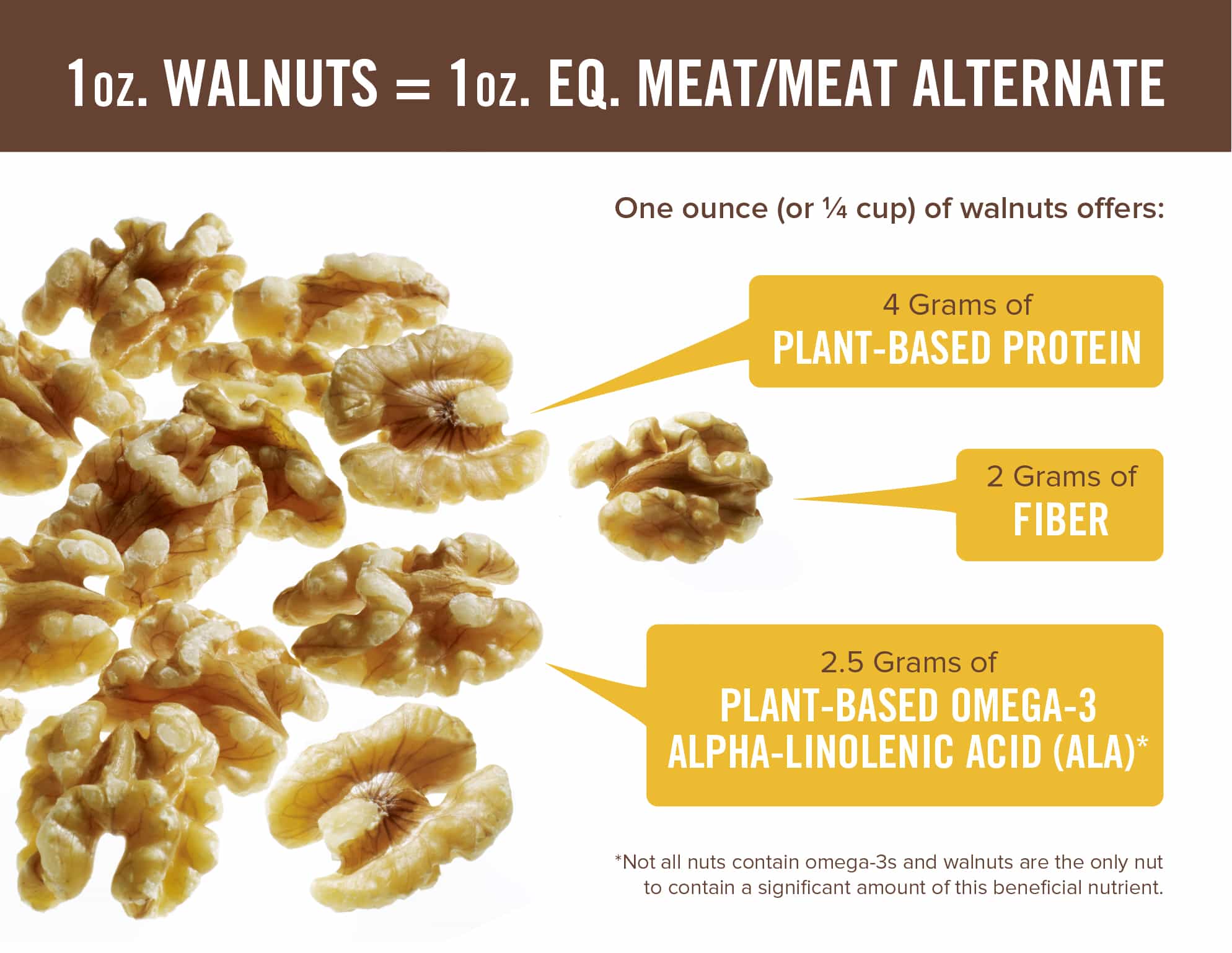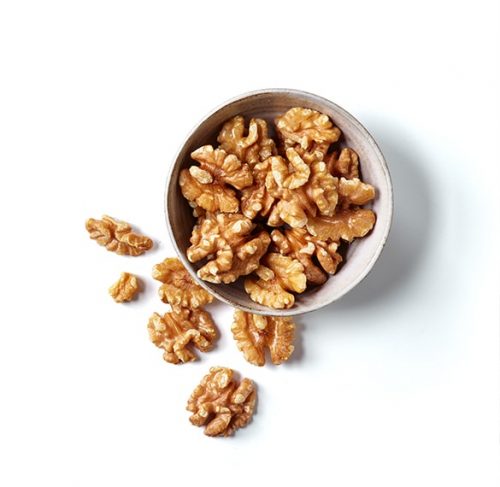A Guide to Serving Walnuts in Schools
With nearly 75% of students interested in eating more plant-based meals, walnuts have earned a spot on their tray.
California walnuts can help evolve your school menu to fit today’s healthy eating trends. Walnuts are a student-approved plant-based meat/meat alternate easy to add to school menus. The California Walnut Board is committed to helping you make school meals nuttier! Get recipes, resources and lesson plans to help you dish up walnuts at breakfast, lunch and snack time.

Walnuts have been recognized
as heart-healthy* by the Food and Drug Administration and bear the American Heart Association heart-check mark. Walnuts provide students with 4 grams protein, 2 grams dietary fiber and plant-based omega-3 alpha linolenic acid (ALA). One ounce of walnuts contains 2.5 g/oz of ALA, which provides 156-250% of the daily recommended intake of ALA for school aged children (1-1.6 g/day).³ Studies show that ALA may be as effective in reducing the risk of cardiovascular disease (CVD) as seafood-based omega-3s, EPA and DHA.⁴

1 Centers for Disease Control and Prevention. Voluntary Guidelines for Managing Food Allergies in Schools and Early Care and Education Programs. Washington, DC: US Department of Health and Human Services; 2013.
The mission of The California Foundation for Agriculture in the Classroom is to increase awareness and understanding of agriculture among California’s educators and students. California Walnuts supports this important mission and has developed lesson plans for grades 2-3, 4-5 and 6-8, exploring walnut production and harvest and walnuts’ nutritional benefits.
One ounce of walnuts is a powerhouse of important nutrients for optimum health.
Unique among nuts, walnuts contain the highest amount of ALA.
Walnuts can help Americans get these important components of a healthy diet.
Kick up breakfast and lunchtime menus with these kid-friendly tasty and nutritious recipes.

Learn about our Greeley, CO school pilot program and how students like walnuts in school meals.

Learn about our Chula Vista, CA school pilot program and how students like walnuts in school meals.
With nearly 75% of students interested in eating more plant-based meals, walnuts have earned a spot on their tray.
